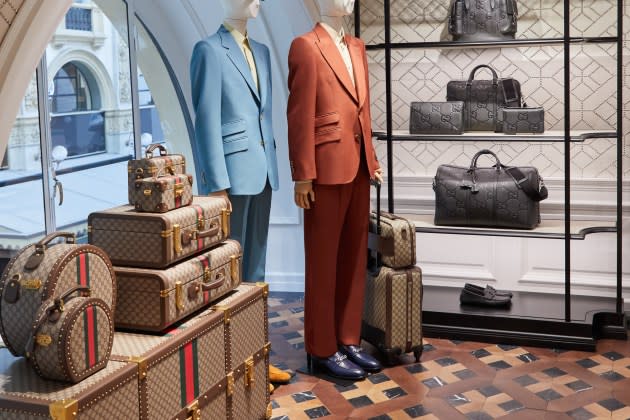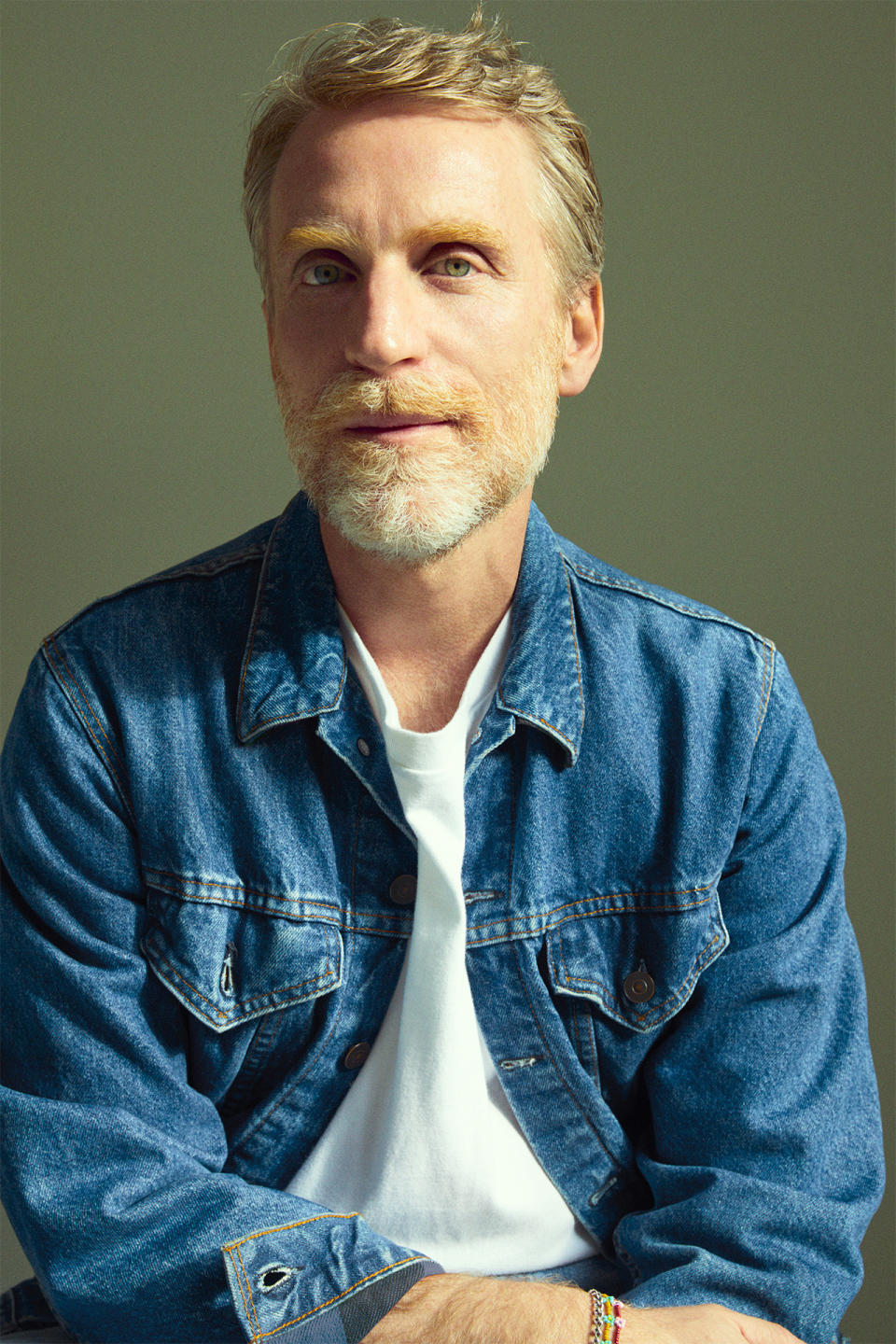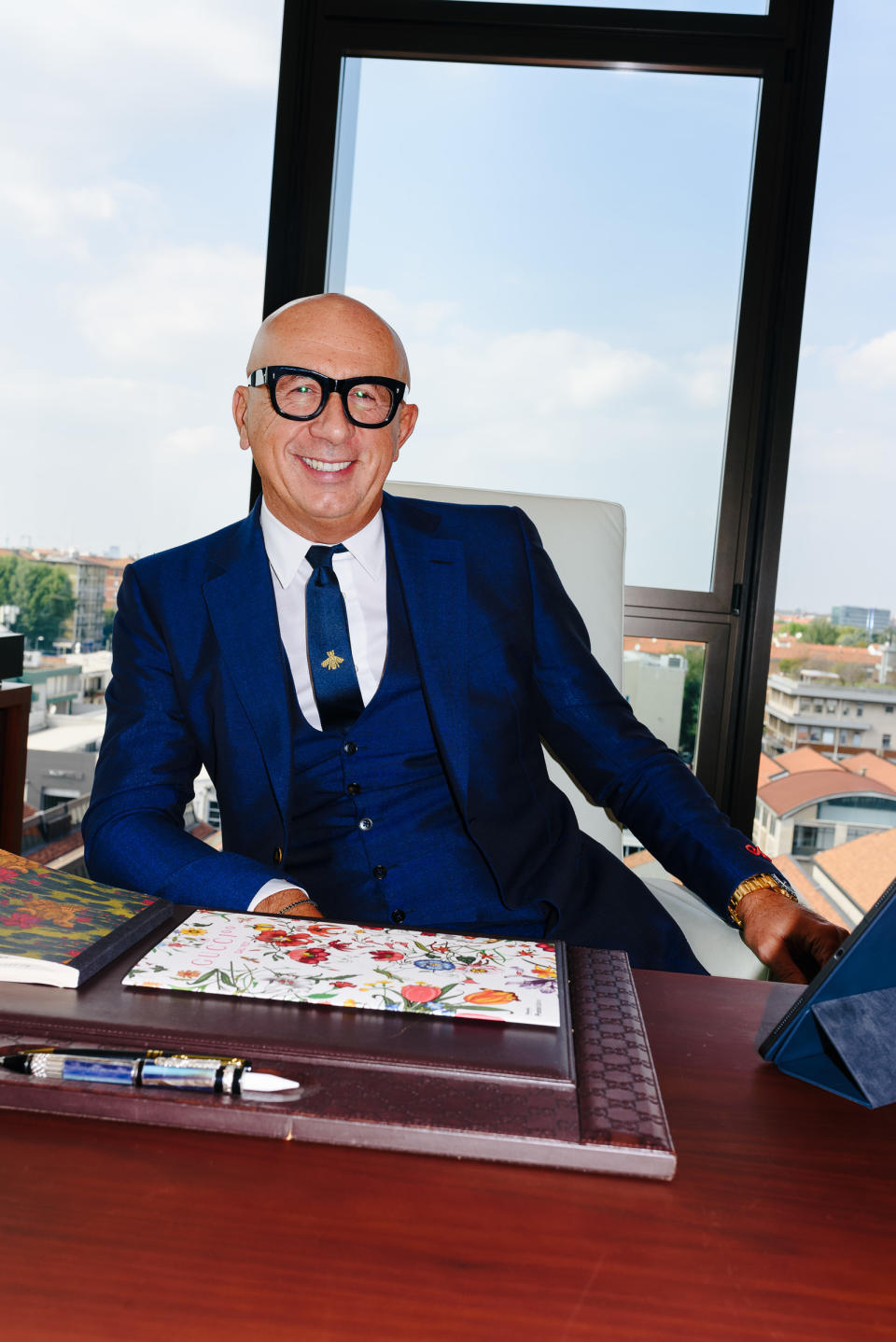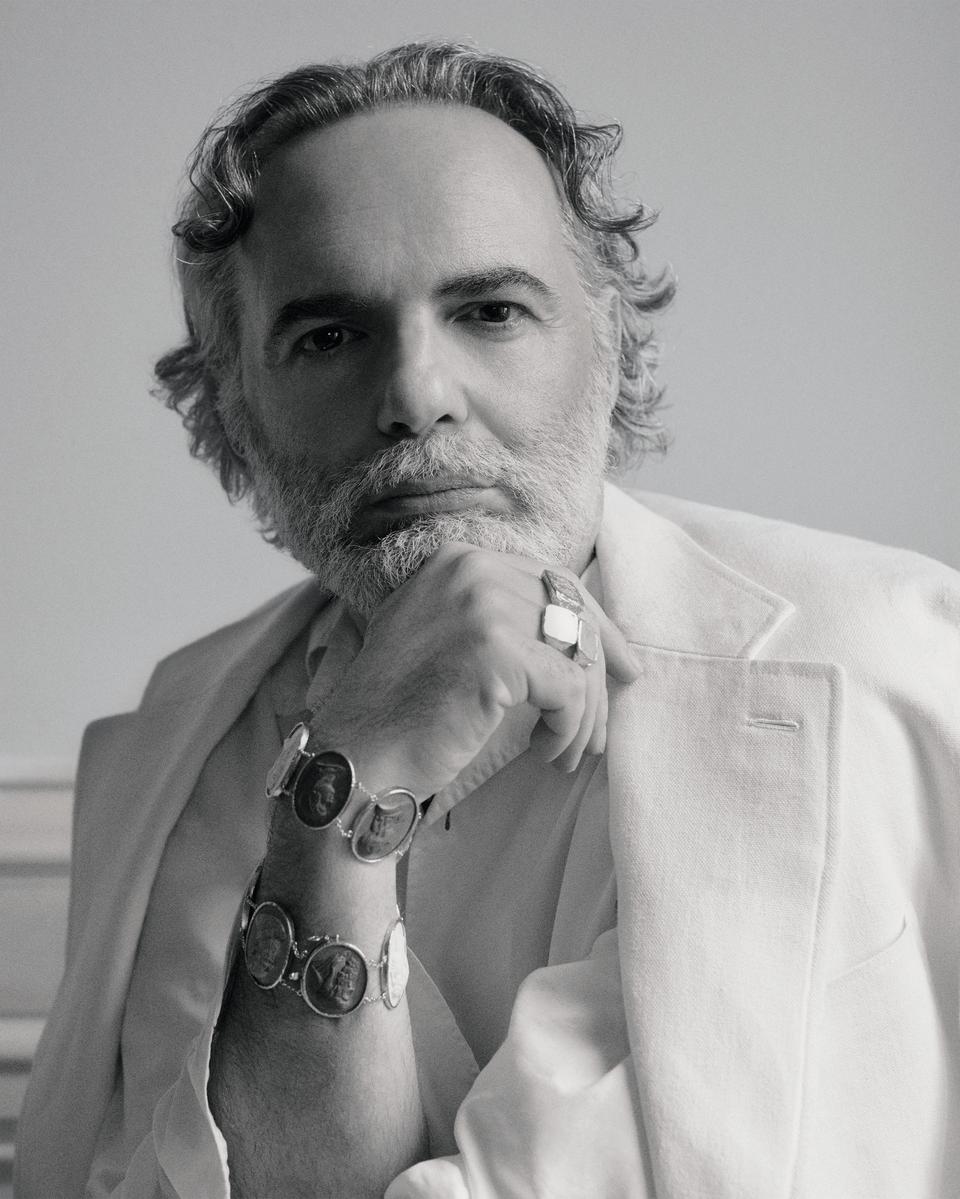The School of Gucci

MILAN — Call it the School of Gucci.
A group of former Gucci executives and designers have been rising through the ranks and been appointed to lead positions in international fashion brands. Among them:
More from WWD
Jacopo Venturini, previously executive vice president, merchandising and global markets at Gucci, was named chief executive officer of Valentino in 2020;
Gianfilippo Testa, who joined Kering in 2016 as Gucci president Greater China and in 2019 became president of Europe, Middle East and Africa and vice president global retail at the Italian brand, was appointed in 2022 as CEO of Alexander McQueen;
Robert Triefus, most recently CEO of Gucci Vault and Metaverse Ventures, senior executive vice president, corporate and brand strategy, has been Stone Island’s CEO since May;
Gianluca Borghi, also a Gucci alum, was named CEO of 10 Corso Como last May, tasked with the expansion of the concept store brand worldwide under new owner Tiziana Fausti.
On the design front, Simone Bellotti was named design director of Bally in May after a 16-year tenure at Gucci, working with both former creative directors Frida Giannini and Alessandro Michele while Davide Renne last month was appointed creative director of Moschino after designing women’s collections for two decades at Gucci, eventually becoming head designer of womenswear. Sadly, his premature death earlier this month left the industry shaken and shattered Renne’s opportunity to prove his talent leading the brand.

So what gives? What lies behind the successful trajectory of these professionals, who consistently rose through the ranks to the number-one spot? Of course the talent must be there in the first place, but most observers connecting the dots pointed to former president and CEO Marco Bizzarri’s M.O.
“The companies that work best are those where there is a clear division of roles between creativity and finance — while the vision must be aligned there, there must not be any interference,” said Paola Cillo, associate professor of management and technology at Bocconi University. Cillo credited Bizzarri, who exited Gucci in September, with “allowing to structure the company and grow its human resources with more specialization.”
The executive, she contended, wanted Gucci to become “a learning organization; his idea was to leave behind the idea of luxury companies as super exclusive and controlled with manic perfection, which is the enemy of creativity. He did not want to penalize experimentation, which means taking risks. Repetition, sticking to the path you know, is safe. Experimentation was not seen as a cultural value of luxury, where you want to minimize mistakes, but you can innovate and experiment only if you take acceptable risks and make thoughtful mistakes. Being accountable was integrated in the Gucci values — to learn more, you tackle projects that are out of your comfort zone.”
Problems could be seen from different perspectives, and this autonomy “gave employees confidence, making them grow.”
Cillo believes that creativity at Gucci “was not confined only to the creative department but was endorsed everywhere, from merchandising to CRM.” For example, for a leaner organization, Bizzarri asked Venturini to supervise not only merchandising but also retail, “two sectors that sometimes don’t talk to each other and can be in conflict,” she said.
Bizzarri led a textbook turnaround at the Italian luxury brand. With Michele, who left in November 2022, the size of Gucci tripled since 2015, reaching sales last year of 9.73 billion euros.
Cillo also praised Bizzarri’s “very interesting intuition to create the shadow committee; he was the first to think of this.” This meant the shadow committee, made up of a group of under-age-30 Gucci employees, would be taken to meetings with the executive committee, discussing the same topics or asked for ideas on different processes. “If you want to sell to Gen Z, it’s important to take them into account and not see them from the rear window but looking at the future.”

Giovanna Brambilla, partner at Milan-based executive search firm Value Search, said Gucci for years has been considered a model to be followed in the relaunch of a brand. “Gucci showed to the world how the courage to innovate, change the rules and present a revolutionary point of view that is also consistent, can lead to exceptional results.”
She credited Michele and Bizzarri for leading the company, but also quoted Michael Jordan, saying that “talent wins games, but teamwork and intelligence win championships.”
Gucci’s success depended on the work of a “very dedicated team, aligned with the vision of the creative director but also with the business objectives to reach, which allowed the brand to reach exceptional successes season after season, year after year, winning the championship for several consecutive years. Teamwork, the 360-degree vision on the project, the alignment, which also allowed cross-pollination within the company, all these ingredients worked for the best recipe” and these experiences have allowed the talents involved to grow and move on.
Andrea Bandiera, senior recruitment and creative manager at Lagente, a Milan-based agency representing designers, concurred, saying that since Michele took his bow at the end of the fall 2015 men’s collection with the whole team, “each talent part of the project was fundamental for its success.”
He opined that the women’s fall 2023 collection helmed by the design team did feel like a continuation of Michele’s imprint, confirming how the collective mindset had probably resonated throughout Michele’s tenure at the luxury house.
He also credited Bizzarri for supporting Michele and his vision, giving him time to leave a substantial mark.
Bandiera underscored how second-in-command designers often act as filters between the creative director and other company functions, turning them into skilled interlocutors for management. He views the pragmatism embedded in their role as a valuable asset when they take on the top job elsewhere, as is the case for Renne at Moschino and Bellotti at Bally.
“They are typically able to respond swiftly to sudden changes [in the company’s strategy],” he said. “They certainly have a creative vision but can also bear and handle corporate dynamics, which on the contrary are marked by frictions between creative directors and management. These are professionals very well accustomed to that kind of communication stream,” he argued.

It shouldn’t be omitted that LVMH Moët Hennessy Louis Vuitton is also widely recognized for raising top-level executives with stellar careers, such as Michael Burke and Pietro Beccari, who have contributed to the global growth of the brands under their tenure, from Dior and Louis Vuitton to Fendi.
Also, it can’t be denied that Gucci has struggled over the last few years with a slower growth than many of its luxury peers. After Michele’s appointment in 2015, Gucci posted growth exceeding 35 percent for five consecutive quarters by the first quarter of 2018, prompting Bizzarri to set a 10 billion euro revenue target for the brand in June that year. Since 2015, the size of Gucci tripled and reached sales last year of 9.73 billion euros.
However, organic sales at Gucci were up 1 percent in the first quarter, compared with a 14 percent drop in the prior three months, still under Bizzarri’s watch. At the time of Michele’s exit, sources said that the designer was asked “to initiate a strong design shift” to light another fire under Gucci — a request he apparently resisted — and that parent company Kering chairman and CEO François-Henri Pinault was set on trying to recover the uber luxury consumer by further elevating the brand.
Among the initiatives conceived to raise the brand’s profile in key markets was the launch of Salon, permanent and temporary spaces where high rollers can order bespoke luggage, exotic leather goods, furniture and high jewelry, with prices ranging from about 40,000 euros to 3 million euros.
The first ultra-luxe Salon store opened in Los Angeles in April, complete with fresh-off-the-red-carpet gowns.
In a serendipitous turn of events, Venturini has also been set on highlighting Valentino as a couture house since his arrival at the brand, and Sabato De Sarno, previously fashion director overseeing both men’s and women’s collections and working with creative director Pierpaolo Piccioli, was named to the top creative post at Gucci last January, succeeding Michele.
No matter, despite Gucci’s slowdown, its textbook turnaround still rings true with observers. Rodgy Guerrera, founder of boutique head hunter Rodgy Guerrera & Partners, believes much of the success of Gucci and of its executives and designers comes from “sharing ideas” and promoting an exchange between the business and design teams. She credited Bizzarri for leaving them much creative freedom, “which allowed the company to grow, but also the individuals to grow. Freedom is fundamental to this end.”
“In recent years, Gucci created a new aesthetic language, making the historical brand accessible to a younger and underrepresented audience, thanks to the support of effective inclusive business strategies, implementing an approach fully immersing to a diverse community, combining the existing and new audience,” said Eva Zimmerman, coordinator business department at Polimoda.
This was “an example of how to perfectly connect artistic and business values through a vast appreciation and an understanding of creative minds. Gucci succeeded in leading the brand into a new positioning and a clear market image, in a new world in which fluidity is central. A business strategy effectively used by niche brands, but highly difficult to scale to a large international fashion house. An approach which required a broad spectrum of international cultural awareness and sensitivity while being perceptive to digitalization, and overall innovation in terms of customer engagement.”
Zimmerman concluded by saying that she “imagine[d] the courage of trust to rely on human ethics, which are no longer values linked to a business approach of an industry relying on trends, must-buy products and immediate turnover.”
With contributions by Martino Carrera.
Best of WWD


